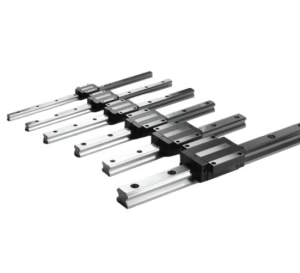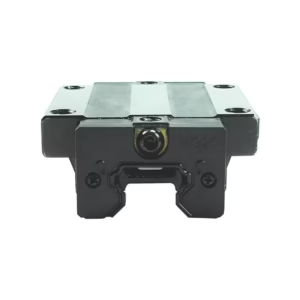Outline for “Linear Guides”
| Main Headings | Sub-Headings |
|---|---|
| Introduction to Linear Guides | What are linear guides?, Historical background, Importance in modern engineering |
| Linear Guides Explained | Structure and function, Materials used, Engineering precision |
| Types of Linear Guides | Ball-type guides, Roller-type guides, Plain linear guides, Miniature linear guides |
| Working Principle of Linear Guides | Mechanics of movement, Load distribution, Friction reduction |
| Advantages of Linear Guides | High accuracy, Durability, Reduced friction, Cost efficiency, Versatility |
| Applications of Linear Guides | CNC machinery, Robotics and automation, Medical devices, Aerospace, Packaging |
| Linear Guides vs Other Motion Systems | Linear guides vs bearings, Linear guides vs bushings, Linear guides vs magnetic systems |
| Design Considerations for Linear Guides | Load requirements, Speed needs, Environmental factors, Maintenance planning |
| Installation of Linear Guides | Preparation and alignment, Required tools, Step-by-step installation |
| Maintenance of Linear Guides | Lubrication practices, Cleaning routines, Wear detection, Preventive checks |
| Common Problems with Linear Guides | Misalignment, Excessive wear, Noise and vibration, Lubrication failures |
| Choosing the Right Linear Guides | Factors to consider, Standards and certifications, Cost-performance balance |
| Innovations in Linear Guides | Self-lubricating systems, Smart monitoring sensors, Lightweight materials |
| Future Trends of Linear Guides | AI-based predictive maintenance, Miniaturization, Sustainable designs |
| Cost of Linear Guides | Factors affecting price, Comparison of types, Return on investment |
| Top Manufacturers of Linear Guides | Global leaders, Emerging brands, Product comparisons |
| Linear Guides in Automation | Industry 4.0 applications, Robotics integration, Impact on productivity |
| Environmental Impact of Linear Guides | Energy efficiency, Recyclability, Green manufacturing |
| Safety Considerations with Linear Guides | Proper handling, Compliance with safety standards, Reducing operational risks |
| Case Studies of Linear Guides | CNC precision improvement, Robotics performance, Aerospace efficiency |
| Linear Guides Maintenance Tools | Lubrication kits, Alignment devices, Vibration analyzers |
| Troubleshooting Linear Guides | Diagnosing issues, Quick fixes, Replacement decisions |
| Linear Guides Lifespan | Longevity factors, Durability best practices, Warranty insights |
| Linear Guides | Dedicated section overviewing the keyword |
| Frequently Asked Questions | Six detailed FAQs |
| Conclusion | Final insights on linear guides |
Introduction to Linear Guides
A linear guide is a motion system designed to ensure precise, smooth, and controlled linear movement. Unlike traditional bushings or sliding mechanisms, linear guides provide high accuracy, reduced friction, and enhanced durability. They are a cornerstone of industries such as robotics, CNC machining, packaging, and aerospace engineering.
The concept of guiding linear motion has existed for centuries, beginning with wooden slides and lubricants. Over time, technology evolved into advanced rolling-element guides capable of micron-level precision. Today, industries prefer linear guides because they combine accuracy, load capacity, and long service life, making them essential for modern automation and high-performance machinery.
Linear Guides Explained
At their core, linear guides consist of two main parts: the guide rail and the carriage block. Rolling elements like balls or rollers circulate within the carriage, enabling frictionless motion along the rail.
Structure and Function: Rails are ground and hardened for precision, while the carriage is engineered to distribute loads evenly.
Materials Used: Hardened steel is common, stainless steel is preferred for corrosive environments, and aluminum alloys are used for lightweight applications.
Engineering Precision: Tolerances are maintained at micrometer levels, ensuring reliability even under demanding loads.
This structure makes linear guides essential in fields where repeatable precision is non-negotiable.
Types of Linear Guides
Several types of linear guides exist, each optimized for specific applications:
Ball-Type Linear Guides: Most common, offering smooth movement and high accuracy.
Roller-Type Linear Guides: Use cylindrical rollers, providing higher rigidity and load capacity.
Plain Linear Guides: No rolling elements, relying on sliding motion; ideal for heavy-duty environments where lubrication is difficult.
Miniature Linear Guides: Compact designs for medical devices, 3D printers, and portable electronics.
Each type carries unique trade-offs in precision, durability, and cost.

Working Principle of Linear Guides
Linear guides operate on rolling-element motion, which minimizes resistance:
Mechanics of Movement: Rolling elements circulate within the carriage, maintaining continuous contact with the rail.
Load Distribution: Forces are spread across multiple contact points, increasing service life.
Friction Reduction: Rolling motion replaces sliding friction, ensuring smooth, efficient movement.
This working principle explains why linear guides excel in high-speed automation.
Advantages of Linear Guides
Linear guides provide multiple engineering benefits:
High Accuracy: Critical in CNC machining and robotics.
Durability: Designed for long life under heavy loads.
Reduced Friction: Smooth rolling action minimizes energy loss.
Cost Efficiency: Long-term savings outweigh initial costs.
Versatility: Suitable for multiple industries.
These advantages make linear guides one of the most reliable motion systems available.
Applications of Linear Guides
Linear guides are widely used across industries:
CNC Machinery: Ensures cutting precision and efficiency.
Robotics and Automation: Provides repeatable accuracy.
Medical Devices: Enables precise imaging and surgical equipment.
Aerospace: Improves assembly accuracy and simulator performance.
Packaging Systems: Ensures high-speed, reliable operations.
The versatility of linear guides underscores their role in modern industry.
Linear Guides vs Other Motion Systems
A comparison shows their superiority:
Linear Guides vs Bearings: Bearings support both rotary and linear motions, but guides are optimized for linear travel with greater rigidity.
Linear Guides vs Bushings: Bushings offer low-cost sliding motion but lack precision.
Linear Guides vs Magnetic Systems: Magnetic levitation is nearly frictionless but too costly for most industries.
Thus, linear guides balance performance and practicality.
Design Considerations for Linear Guides
When designing with linear guides, engineers must consider:
Load Requirements: Heavier loads require roller-type guides.
Speed Needs: High-speed automation benefits from ball-type guides.
Environmental Factors: Dust, humidity, and chemicals can affect performance.
Maintenance Planning: Self-lubricating options reduce downtime.
Balancing these considerations ensures maximum efficiency.
Installation of Linear Guides
Correct installation is key:
Preparation: Clean mounting surfaces and check alignment.
Tools Required: Torque wrenches, alignment gauges, lubrication tools.
Steps:
Mount the rail securely.
Install the carriage block without damaging rolling elements.
Tighten bolts evenly with specified torque.
Test for smooth, uniform motion.
Misalignment drastically shortens service life.
Maintenance of Linear Guides
Effective maintenance keeps systems reliable:
Lubrication Practices: Use oil or grease periodically.
Cleaning Routines: Remove dust and contaminants regularly.
Wear Detection: Monitor noise, vibration, and uneven motion.
Preventive Checks: Scheduled inspections extend lifespan.
A disciplined maintenance routine prevents unexpected breakdowns.
Common Problems with Linear Guides
Typical issues include:
Misalignment: Causes uneven wear.
Excessive Wear: Often from insufficient lubrication.
Noise and Vibration: Indicators of contamination or misfit.
Lubrication Failures: Lead to overheating and early failure.
Proactive monitoring solves most of these problems.
Choosing the Right Linear Guides
Selection depends on:
Load and Speed Requirements
Environmental Conditions
Budget vs Performance Needs
Compliance with Standards (ISO, ANSI, JIS)
A poor choice may reduce both efficiency and service life.
Innovations in Linear Guides
Recent innovations include:
Self-Lubricating Systems: Reduce maintenance.
Smart Monitoring Sensors: Provide real-time diagnostics.
Lightweight Materials: Enhance energy efficiency.
These innovations boost performance and sustainability.
Future Trends of Linear Guides
The future promises exciting advancements:
AI-Based Predictive Maintenance
Miniaturization for micro-robotics and medical devices
Sustainable Eco-Friendly Materials
Linear guides are evolving into smarter, greener, and more versatile systems.
Cost of Linear Guides
Pricing depends on:
Type and Size
Material Selection
Customization Needs
While costs vary, the long-term ROI is excellent thanks to durability and efficiency.
Top Manufacturers of Linear Guides
Some key players include:
THK (Japan): Global leader in precision.
HIWIN (Taiwan): Affordable and reliable.
Bosch Rexroth (Germany): High-performance engineering.
NSK (Japan): Excellent for heavy-duty applications.
These manufacturers set quality benchmarks worldwide.
Linear Guides in Automation
In Industry 4.0, linear guides are essential:
Improve robotic arm accuracy.
Enhance automated assembly lines.
Increase productivity and reduce defects.
They are central to the future of smart factories.
Environmental Impact of Linear Guides
Sustainability is gaining focus:
Energy Efficiency: Reduced friction saves energy.
Recyclability: Many components are fully recyclable.
Green Manufacturing: Growing adoption of eco-friendly production.
Linear guides are evolving to support sustainable industries.
Safety Considerations with Linear Guides
Safe operation requires:
Careful handling to avoid contamination.
Adherence to safety standards (ISO, ANSI).
Regular inspection to reduce risks.
Safety is as important as efficiency.
Case Studies of Linear Guides
CNC Machining: Achieved 30% higher cutting precision.
Robotics: Improved repeatability in pick-and-place tasks.
Aerospace: Enhanced simulator accuracy.
Real-world applications show measurable benefits.
Linear Guides Maintenance Tools
Helpful tools include:
Lubrication Kits
Alignment Devices
Vibration Analyzers
These tools ensure optimal performance and quick troubleshooting.
Troubleshooting Linear Guides
When issues occur:
Diagnose Early: Identify wear, misalignment, or lubrication issues.
Quick Fixes: Re-lubricate or adjust alignment.
Replacement: When damage is beyond repair.
Timely troubleshooting reduces downtime.
Linear Guides Lifespan
Lifespan depends on:
Proper installation and alignment.
Regular lubrication.
Avoiding overloads.
Typically, linear guides last 8–12 years under industrial conditions.
Linear Guides
A linear guide is not just a motion component; it is the backbone of modern engineering systems. From medical devices to heavy industrial automation, it ensures motion is precise, reliable, and efficient.
Frequently Asked Questions
What are linear guides used for?
They provide accurate linear motion in machines like CNCs, robots, and medical equipment.
Which type of linear guide is best?
Ball-type is best for general use, while roller-type is ideal for heavy loads.
How do you maintain linear guides?
Lubricate regularly, clean contaminants, and perform scheduled inspections.
What causes linear guides to fail?
Misalignment, poor lubrication, and contamination are the top causes.
Can linear guides be customized?
Yes, manufacturers offer different materials, coatings, and designs.
Are linear guides expensive?
While more expensive initially, their durability makes them cost-effective.
Conclusion
Linear guides are the backbone of precision engineering. They deliver accuracy, efficiency, and long service life in diverse applications ranging from CNC machining to aerospace. Their innovations, like self-lubrication and smart sensors, make them future-ready for Industry 4.0.
Choosing the right linear guide means higher productivity, fewer breakdowns, and long-term cost savings—proving why they remain indispensable in engineering.
Suggestions for Inbound Links
Article on CNC machining precision
Guide to robotics components
Resource on preventive maintenance



